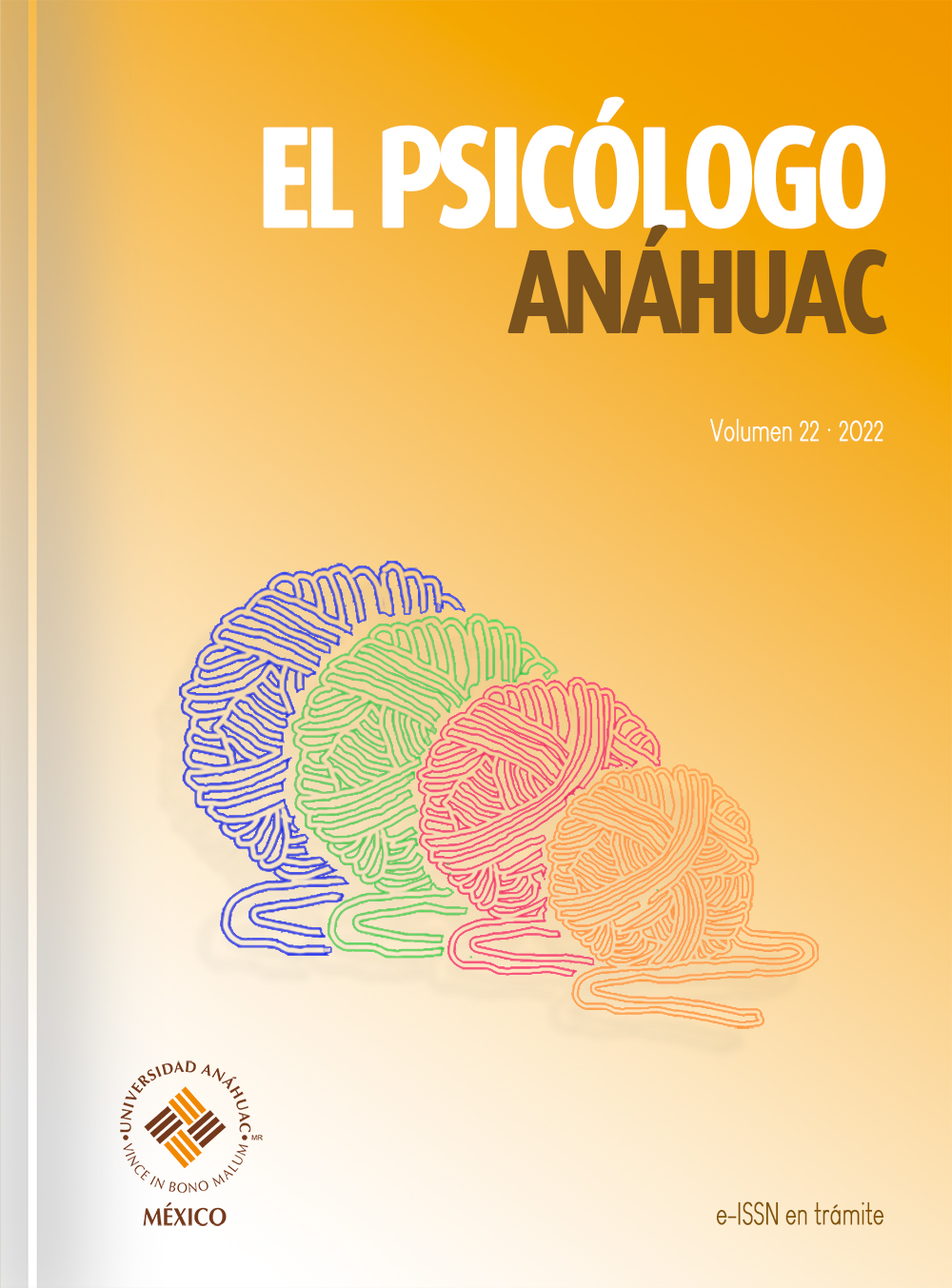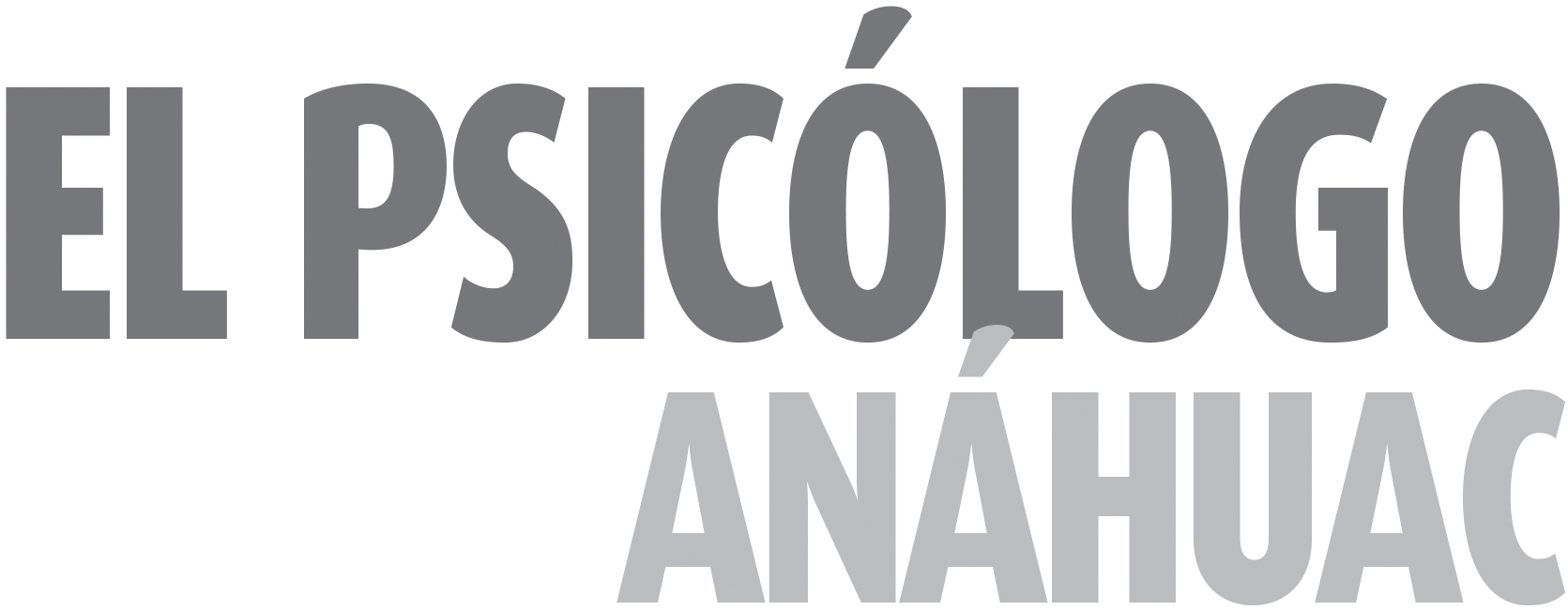Estrés relacionado a evento, depresión, y ansiedad en una muestra mexicana durante la segunda etapa de la pandemia COVID-19
DOI:
https://doi.org/10.36105/psic_anah.2022v22.06Palabras clave:
covid-19, estrés relacionado con eventos, depresión, ansiedad, méxicoResumen
Efforts are being made around the world to survey the psychological effects of the COVID-19 pandemic. The objective of this study was to describe severity of event-related stress, depression, and anxiety during the second stage of COVID-19 pandemic in Mexico, and to explore associations between these variables, sociodemographic characteristics, and specific concerns about COVID-19. A cross-sectional online survey was conducted in the State of Mexico from April 8th -18th, 2020, in a sample of men and women between 18-60 years-old. Variables were measured with the Impact of Event Scale-6, Patient Health Questionnaire-9, General Anxiety Disorder-7, and a questionnaire of concerns about COVID-19. A total of 5703 participants were analyzed. Around 24% of participants met significant event-related stress, mild levels of depression and anxiety, as well as high values in all concerns about COVID-19, especially regarding financial disruption, worsening of local security and concern of a family member becoming infected. These concerns associated mild-to-moderately with the indicators of psychological distress. Higher values of event-related stress were found in women, individuals with higher educational attainment and those with any current high-risk medical diagnosis, though the effect sizes were mild. Event-related stress, depression, anxiety, and concerns about COVID-19 reached significant levels during the second stage of the pandemic in Mexico though, overall, not a dysfunctional severity. It is important to report tracking of the progression of these variables during the following phases.
Descargas
Citas
Ahorsu, D. K., Lin, C.-Y., Imani, V., Saffari, M., Griffiths, M. D., & Pakpour, A. H. (2020). The Fear of COVID-19 Scale: Development and initial validation. International Journal of Mental Health and Addiction. https://doi.org/10.1007/s11469-020-00270-8
Ávila, M. E., Martínez-Ferrer, B., Vera, A., Bahena, A., & Musitu, G. (2016). Victimization, perception of insecurity, and changes in daily routines in Mexico. Revista de Saúde Pública, 50, 1–9. https://doi.org/10.1590/S1518-8787.2016050006098
Beaglehole, B., Mulder, R. T., Frampton, C. M., Boden, J. M., Newton-Howes, G., & Bell, C. J. (2018). Psychological distress and psychiatric disorder after natural disasters: Systematic review and meta-analysis. British Journal of Psychiatry, 213(6), 716–722. https://doi.org/10.1192/bjp.2018.210
Bromet, E. J., Atwoli, L., Kawakami, N., Navarro-Mateu, F., Piotrowski, P., King, A. J., … Kessler, R. C. (2017). Post-traumatic stress disorder associated with natural and human-made disasters in the World Mental Health Surveys. Psychological Medicine, 47(2), 227–241. https://doi.org/10.1017/S0033291716002026
Brooks, S. K., Webster, R. K., Smith, L. E., Woodland, L., Wessely, S., Greenberg, N., & Rubin, G. J. (2020). The psychological impact of quarantine and how to reduce it: rapid review of the evidence. The Lancet, 395(10227), 912–920. https://doi.org/10.1016/S0140-6736(20)30460-8
Bults, M., Beaujean, D. J. M. A., De Zwart, O., Kok, G., Van Empelen, P., Van Steenbergen, J. E., … Voeten, H. A. C. M. (2011). Perceived risk, anxiety, and behavioural responses of the general public during the early phase of the Influenza A (H1N1) pandemic in the Netherlands: Results of three consecutive online surveys. BMC Public Health, 11, 1–13. https://doi.org/10.1186/1471-2458-11-2
Caamaño, L. W., Fuentes, D. M., González, L. B., Melipillán, R. A., Sepúlveda, M. C., & Valenzuela, E. G. (2011). Adaptación y validación de la versión chilena de la escala de impacto de evento-revisada (EIE-R). Revista Médica de Chile, 139(9), 1163–1168. https://doi.org/10.4067/S0034-98872011000900008
Castro Silva, E., Benjet, C., Juárez García, F., Jurado Cárdenas, S., Gómez-Maqueo, M. E. L., & Valencia Cruz, A. (2017). Non-suicidal self-injuries in a sample of Mexican university students. Salud Mental, 40(5), 191–199. https://doi.org/10.17711/SM.0185-3325.2017.025
Costa, P. T., Terracciano, A., & McCrae, R. R. (2001). Gender differences in personality traits across cultures: Robust and surprising findings. Journal of Personality and Social Psychology, 81(2), 322–331. https://doi.org/10.1037/0022-3514.81.2.322
Donlan, W., & Lee, J. (2010). Screening for depression among indigenous Mexican migrant farmworkers using the Patient Health Questionnaire–9. Psychological Reports, 106(2), 419–432. https://doi.org/10.2466/PR0.106.2.419-432
Familiar, I., Ortiz-Panoso, E., Hall, B., Vieitez, I., Romieu, I., Lopez-Ridaura, R., & Lajous, M. (2014). Factor structure of the Spanish version of the Patient Health Questionnaire-9 in Mexican women. International Journal of Methods in Psychiatric Research, 24(1), 74–82. https://doi.org/10.1002/mpr.1461
Fleischer, N. L., Diez Roux, A. V., Alazraqui, M., & Spinelli, H. (2008). Social patterning of chronic disease risk factors in a Latin American city. Journal of Urban Health, 85(6), 923–937. https://doi.org/10.1007/s11524-008-9319-2
García-Campayo, J., Zamorano, E., Ruíz, M. A., Pardo, A., Freire, O., Pérez-Páramo, M., … Rejas, J. (2009). Cultural adaptation into Spanish of the Generalized Anxiety Disorder Scale-7 (GAD-7) Scale. European Psychiatry, 24, S538. https://doi.org/10.1016/s0924-9338(09)70771-0
JASP Team. (2019). JASP (Version 0.11.1).
Kroenke, K., Spitzer, R. L., & Williams, J. B. W. (2001). The PHQ-9: Validity of a brief depression severity measure. Journal of General Internal Medicine, 16(9), 606–613. https://doi.org/10.1046/j.1525-1497.2001.016009606.x
Li, S., Wang, Y., Xue, J., Zhao, N., & Zhu, T. (2020). The impact of COVID-19 epidemic declaration on psychological consequences: A study on active weibo users. International Journal of Environmental Research and Public Health, 17(6). https://doi.org/10.3390/ijerph17062032
Parkerson, H. A., Thibodeau, M. A., Brandt, C. P., Zvolensky, M. J., & Asmundson, G. J. G. (2015). Cultural-based biases of the GAD-7. Journal of Anxiety Disorders, 31, 38–42. https://doi.org/10.1016/j.janxdis.2015.01.005
Pfefferbaum, B., & North, C. S. (2020). Mental health and the COVID-19 pandemic. New England Journal of Medicine, 383(6), 510-512. https://doi.org/10.1056/NEJMp2008017
Plummer, F., Manea, L., Trepel, D., & McMillan, D. (2016). Screening for anxiety disorders with the GAD-7 and GAD-2: A systematic review and diagnostic metaanalysis. General Hospital Psychiatry, 39, 24–31. https://doi.org/10.1016/j.genhosppsych.2015.11.005
Qiu, J., Shen, B., Zhao, M., Wang, Z., Xie, B., & Xu, Y. (2020). A nationwide survey of psychological distress among Chinese people in the COVID-19 epidemic: Implications and policy recommendations. General Psychiatry, 33(2), 19–21. https://doi.org/10.1136/gpsych-2020-100213
Roy, D., Tripathy, S., Kumar, S., Sharma, N., Verma, S. K., & Kaushal, V. (2020). Study of knowledge, attitude, anxiety & perceived mental healthcare need in Indian population during COVID-19 pandemic. Asian Journal of Psychiatry, 51, 102083. https://doi.org/10.1016/j.ajp.2020.102083
Secretaría de Salud. (2000). Comunicado técnico diario COVID-19. México 28/04/2020.
Sierra-Aparicio, T. A., Magaña-Quijano, B. P., Vargas-Quiñones, J., Martínez-García, B., & Toledo-Fernández, A. (2019). Moderating effects of executive function between depression severity and work performance: A web-based cross-sectional study. Salud Mental, 42(2). https://doi.org/10.17711/SM.0185-3325.2019.008
Spitzer, R. L., Kroenke, K., Williams, J. B. W., & Löwe, B. (2006). A brief measure for assessing generalized anxiety disorder: The GAD-7. Archives of Internal Medicine, 166(10), 1092–1097. https://doi.org/10.1001/archinte.166.10.1092
Thoresen, S., Tambs, K., Hussain, A., Heir, T., Johansen, V. A., & Bisson, J. I. (2010). Brief measure of posttraumatic stress reactions: Impact of Event Scale-6. Social Psychiatry and Psychiatric Epidemiology, 45(3), 405–412. https://doi.org/10.1007/s00127-009-0073-x
Tracy, M., Norris, F. H., & Galea, S. (2011). Differences in the determinants of posttraumatic stress disorder and depression after a mass traumatic event. Depression and Anxiety, 28(8), 666–675. https://doi.org/10.1002/da.20838
Venkatesh, A., & Edirappuli, S. (2020). Social distancing in COVID-19: What are the mental health implications? The BMJ, 369(April), 2020. https://doi.org/10.1136/bmj.m1379
Wang, C., Pan, R., Wan, X., Tan, Y., Xu, L., Ho, C. S., & Ho, R. C. (2020). Immediate psychological responses and associated factors during the initial stage of the 2019 coronavirus disease (COVID-19) epidemic among the general population in China. International Journal of Environmental Research and Public Health, 17(5). https://doi.org/10.3390/ijerph17051729
Wang, H. R., Cho, H., & Kim, D.-J. (2018). Prevalence and correlates of comorbid depression in a nonclinical online sample with DSM-5 internet gaming disorder. Journal of Affective Disorders, 226, 1–5. https://doi.org/10.1016/j.jad.2017.08.005
Weiss, D. S. (2007). The impact of event scale: revised. En J. P. Wilson & C. S.-k. Tang (Eds.), Cross-cultural assessment of psychological trauma and PTSD (pp. 219–238). Nueva York: Springer.
World Health Organization [WHO]. (2020). Coronavirus disease 2019 (COVID-19): situation report 63.
Xiang, Y. T., Yang, Y., Li, W., Zhang, L., Zhang, Q., Cheung, T., & Ng, C. H. (2020). Timely mental health care for the 2019 novel coronavirus outbreak is urgently needed. The Lancet Psychiatry, 7(3), 228–229. https://doi.org/10.1016/S2215-0366(20)30046-8
Descargas
Publicado
Cómo citar
Número
Sección
Licencia

Esta obra está bajo una licencia internacional Creative Commons Atribución-NoComercial-CompartirIgual 4.0.
El Psicólogo Anáhuac se distribuye bajo una licencia internacional Licencia Creative Commons Atribución-NoComercial-CompartirIgual 4.0 Internacional.
El autor conserva los derechos patrimoniales sin restricciones y garantiza a la revista el derecho de ser la primera publicación del trabajo. El autor es libre de depositar la versión publicada en cualquier otro medio, como un repositorio institucional o en su propio sitio web.















